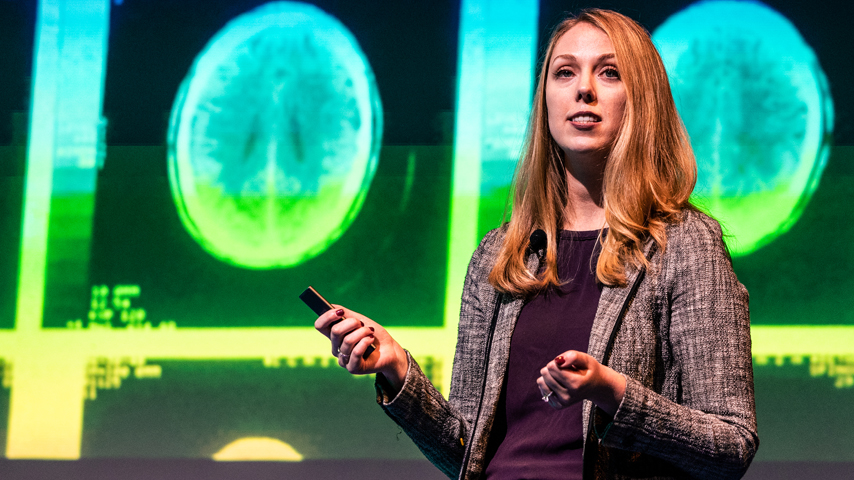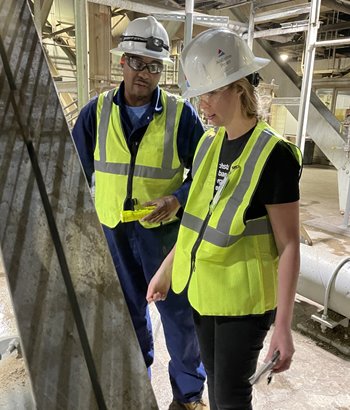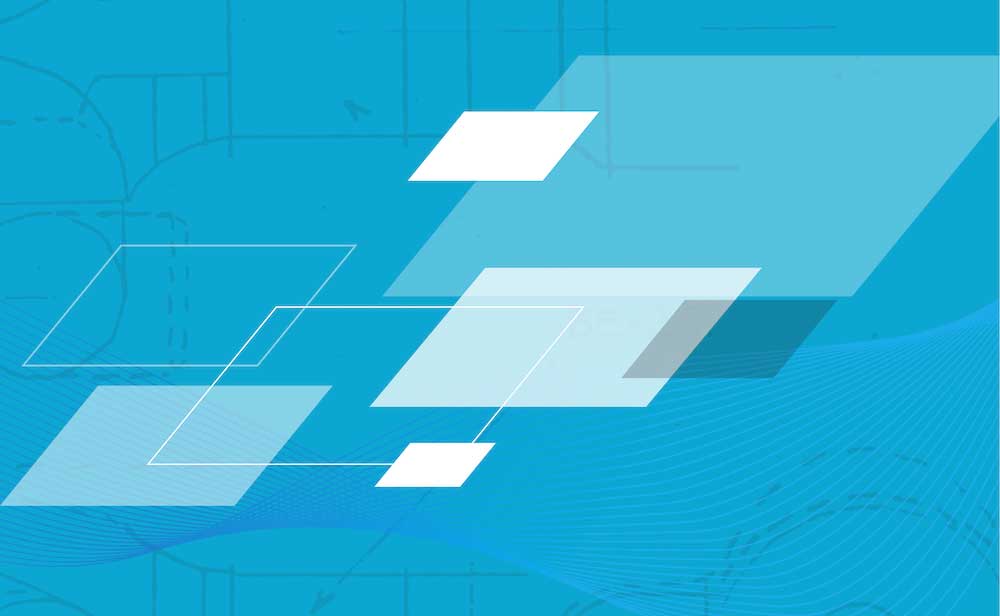Harvesting Rare Earth Elements from Coal Ash
Harvesting Rare Earth Elements from Coal Ash


After receiving her Ph.D. in environmental engineering, Laura Stoy founded a start-up clean-technology firm to recover rare earth elements from coal ash waste piles across the U.S.
Laura Stoy received her Ph.D. in environmental engineering in 2021 from the Georgia Institute of Technology—now, three years later, she is the founder of her own clean-technology start-up firm.
An environmentalist at heart, Stoy wanted to take on research that would have global implications for cleaning up the planet.
Her target?
“I really wanted to clean up the old ash ponds from burning coal as an energy source,” Stoy said.
Her goal was two-fold: First, remove toxic coal ash from the environment and second, develop a process for recovering the valuable and strategic rare earth elements (REEs) that are concentrated in this hugely abundant and easily accessible resource.
Coal fly ash is a by-product from coal-fired power plants. Concentrations of REEs in fly ash are similar to those in raw ores that require costly mining. More than 700 coal ash ponds exist in the U.S. and represent a total of about two billion metric tons of ash. Within this resource are enough REEs to meet U.S. needs for the next 100 years.
REEs are vital materials for the production of semiconductors, electronics, and clean-tech equipment. With very limited domestic REE resources, the U.S. largely relies on REEs imported from China, which dominates this market. If Stoy could develop a technology that is cost-effective in removing REEs, it would create a huge, sustainable domestic source of REEs that would free the U.S. from relying on other countries for this valuable material and the inherent national security risks that result.
Stoy’s advisor, civil and environmental engineering professor Ching-Hua Huang, was totally on board with the research topic.
They soon discovered that the application of a novel ionic liquid to the solid coal fly ash successfully removed the REEs in a safe process that created little waste.
Become a Member: How to Join ASME
Stoy’s patent-pending ionic liquid leaching process is the key part of the technology. “Our ionic liquid combines with rare earths and displays unique thermomorphic behavior,” she said. “When cool, water and the ionic liquid are immiscible, but upon heating, they form a single liquid phase. This liquid phase leaches the rare earths from the ash, and upon cooling, the phases separate, sequestering the rare earths in the ionic liquid phase. There, they can be easily stripped.”
This breakthrough innovation combines extraction from the solid and separation from bulk materials in a single step, reducing the amount of required downstream processing compared to tradition methods, which rely on consuming large quantities of corrosive and dangerous chemicals.
Stoy finished her Ph.D. in 2021 and founded Rivalia Chemical Company in 2022. Since then, she has become an expert in raising venture funding and joined a prominent start-up accelerator program.
One of the next steps is demonstrating the viability of the residual solid ash after the REEs have been harvested. This includes stress testing, strength testing, leaching, and more to ensure ASTM standards are met.
A very positive surprise from her research is that the new leaching method works just as well on weathered ash (coal ash that has been stored wet in ash ponds for 10 years or more) as on freshly produced ash. “This is important for Rivalia as a start-up,” she noted. “We are not restricted to working with just freshly produced materials, but we can also work with older legacy ash ponds.”
More for You: Engineering Proteins to Mine for Rare Earths
After the REEs are harvested, the residual solids from the process may be used in concrete. Coal ash is an existing ingredient in concrete, where it replaces Portland cement. Cement production produces large amounts of CO2. However, when the ash replaces 20 percent to 40 percent of cement in concrete, it dramatically decreases greenhouse gas emissions. It also produces a stronger, more stable concrete.
For the next two years the company will be focused on R&D. “Scaling our process from bench scale to building our first pilot,” Stoy said. “As we have been developing the technology, many utilities have reached out to partner with us. We are so grateful for these partnerships and are always looking for more. Start-ups need to make sure they are building the right thing and we rely on these connections to guide us to develop the correct solutions.”
Stoy is passionate about building out the U.S.’s domestic capabilities to mine and process rare earths and other critical minerals. “Without these metals, the green revolution will be out of our grasp—at least, building it on our own terms,” she said. “As China and Saudi Arabia continue to invest heavily in metals and mining, the U.S. has a choice to invest or be beholden to foreign interests. The DOE has taken some great steps toward the infrastructure that industry and start-ups need to build a domestic supply chain. We need to continue that momentum.”
Mark Crawford is a technology writer in Corrales, N.M.
An environmentalist at heart, Stoy wanted to take on research that would have global implications for cleaning up the planet.
Her target?
“I really wanted to clean up the old ash ponds from burning coal as an energy source,” Stoy said.
Her goal was two-fold: First, remove toxic coal ash from the environment and second, develop a process for recovering the valuable and strategic rare earth elements (REEs) that are concentrated in this hugely abundant and easily accessible resource.
Coal fly ash is a by-product from coal-fired power plants. Concentrations of REEs in fly ash are similar to those in raw ores that require costly mining. More than 700 coal ash ponds exist in the U.S. and represent a total of about two billion metric tons of ash. Within this resource are enough REEs to meet U.S. needs for the next 100 years.
REEs are vital materials for the production of semiconductors, electronics, and clean-tech equipment. With very limited domestic REE resources, the U.S. largely relies on REEs imported from China, which dominates this market. If Stoy could develop a technology that is cost-effective in removing REEs, it would create a huge, sustainable domestic source of REEs that would free the U.S. from relying on other countries for this valuable material and the inherent national security risks that result.
Simple (ionic) solution
Stoy’s advisor, civil and environmental engineering professor Ching-Hua Huang, was totally on board with the research topic.
They soon discovered that the application of a novel ionic liquid to the solid coal fly ash successfully removed the REEs in a safe process that created little waste.
Become a Member: How to Join ASME
Stoy’s patent-pending ionic liquid leaching process is the key part of the technology. “Our ionic liquid combines with rare earths and displays unique thermomorphic behavior,” she said. “When cool, water and the ionic liquid are immiscible, but upon heating, they form a single liquid phase. This liquid phase leaches the rare earths from the ash, and upon cooling, the phases separate, sequestering the rare earths in the ionic liquid phase. There, they can be easily stripped.”
This breakthrough innovation combines extraction from the solid and separation from bulk materials in a single step, reducing the amount of required downstream processing compared to tradition methods, which rely on consuming large quantities of corrosive and dangerous chemicals.
Commercializing the technology
Stoy finished her Ph.D. in 2021 and founded Rivalia Chemical Company in 2022. Since then, she has become an expert in raising venture funding and joined a prominent start-up accelerator program.
One of the next steps is demonstrating the viability of the residual solid ash after the REEs have been harvested. This includes stress testing, strength testing, leaching, and more to ensure ASTM standards are met.
A very positive surprise from her research is that the new leaching method works just as well on weathered ash (coal ash that has been stored wet in ash ponds for 10 years or more) as on freshly produced ash. “This is important for Rivalia as a start-up,” she noted. “We are not restricted to working with just freshly produced materials, but we can also work with older legacy ash ponds.”
More for You: Engineering Proteins to Mine for Rare Earths
After the REEs are harvested, the residual solids from the process may be used in concrete. Coal ash is an existing ingredient in concrete, where it replaces Portland cement. Cement production produces large amounts of CO2. However, when the ash replaces 20 percent to 40 percent of cement in concrete, it dramatically decreases greenhouse gas emissions. It also produces a stronger, more stable concrete.
For the next two years the company will be focused on R&D. “Scaling our process from bench scale to building our first pilot,” Stoy said. “As we have been developing the technology, many utilities have reached out to partner with us. We are so grateful for these partnerships and are always looking for more. Start-ups need to make sure they are building the right thing and we rely on these connections to guide us to develop the correct solutions.”
Stoy is passionate about building out the U.S.’s domestic capabilities to mine and process rare earths and other critical minerals. “Without these metals, the green revolution will be out of our grasp—at least, building it on our own terms,” she said. “As China and Saudi Arabia continue to invest heavily in metals and mining, the U.S. has a choice to invest or be beholden to foreign interests. The DOE has taken some great steps toward the infrastructure that industry and start-ups need to build a domestic supply chain. We need to continue that momentum.”
Mark Crawford is a technology writer in Corrales, N.M.






